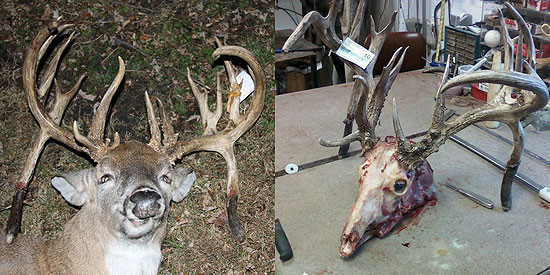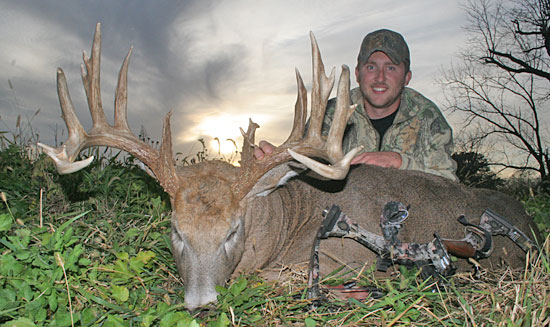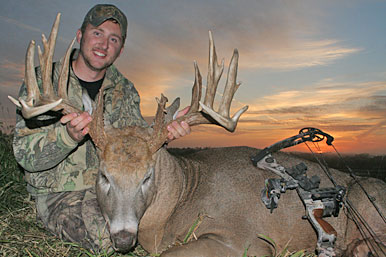First, the good news: White-tailed deer hunting should be good this fall.
The herds have taken some hits in recent years from hard winters, but they’ve repeatedly proven resilient. Whitetails should continue to provide some of the state’s best big game hunts.
But overall, you can expect deer hunting to be tougher than last year.
Deer hunters in 2010 (whitetails and mule deer) snapped a three-year decline in harvest despite 12,715 fewer tags sold between 2008 and 2010.
Idaho deer hunters killed 44,328 deer in general and controlled hunts in 2010, including 25,337 mule deer and 19,031 whitetails for a combined success rate of 37 percent. In 2009, hunters killed 42,300 deer.
The harvest will likely drop this fall because of a hard winter that killed lots of mule deer fawns.
“We expect deer to be down a little because we had some high over-winter mortality,” said Brad Compton, state wildlife manager.
WHITE-TAILED DEER
Whitetails in the north and north/central parts of the state provide the best deer hunting opportunities year after year.
Long hunting seasons, including hunts during the rut and lots of either-sex opportunity, have landed the North Idaho hunting units among the top for harvest and success rates for several years running.
Unit 1 in the northernmost Panhandle is a perennial top unit for whitetails and routinely exceeds statewide success rates.
Unit 10A in north/central Idaho was another winner last year, landing in the top five for both deer harvest and success rates, and it was also a top elk producer. While hunting units north of the Salmon River provide the best whitetail hunting, the animals are distributed throughout Idaho except the southern-most parts of the state.
Deer hunters with a general tag can harvest whitetails in most areas throughout October, but those wanting to hunt whitetails in the prime November rut must opt for a white-tailed deer tag, which excludes hunters from killing a mule deer.
MULE DEER
Mule deer hunter’s modest bump in the harvest last year will likely be shortlived because mule deer hunters will be hit with a double-whammy: low fawn survival and conditions that could make deer hard to find.
Last winter, Fish and Game biologists monitored 192 radio-collared fawns in 39 hunting units south of the Salmon River, and only 26 percent survived. It’s the lowest survival rate since monitoring started in 1998, and a fraction of the long-term average of about 60 percent survival.
Fawn survival is an indicator of upcoming hunts because fawns that survive winter become yearlings in the fall, which are typically a large percentage of the deer
harvest.
That being said, adult winter-kill was average, and the state’s buck/doe ratio is meeting Fish and Game’s objectives of 15 bucks per 100 does. That means there should be a fair number of mature bucks available this year — if you can find them.
The prolonged, cool, wet spring created abundant forage for deer and prime conditions for good antler growth. While that bodes well for the animals, it doesn’t necessarily do hunters a favor.
Abundant forage and water often means animals don’t congregate around scarce water sources like during a dry year, so finding animals could be a challenge.
ELK
Did elk harvests bottom out in 2009? It’s an interesting question after harvest declined for four years, but went from 15,800 in 2009 year to 17,792 in 2010.
F&G officials attribute the increase to favorable weather last hunting season that brought snow to some areas and drove elk out of the high country, or just made them easier to hunt.
The increased harvest in 2010 is more notable considering Fish and Game sold 7,800 fewer elk tags in 2010 than it did in 2008 and 2,256 fewer than it did in 2009, so it was actually fewer hunters killing more elk, which drive the statewide success rate up to 23 percent.
But we’re hunters, not accountants, right? What does it mean for this year?
F&G game officials expect this fall’s harvest to be similar to 2010.
Elk are not as prone to winter kill as deer, so elk herds tend to be more stable.
Despite that, elk herds are facing different sets of challenges, including habitat, predators, and cow productivity and calf survival.
Hunters also have faced challenges when elk herds dwindled in traditional strongholds, while herds elsewhere have maintained populations or increased.
“We have good elk populations and fully functioning herds in two-thirds of our zones,” F&G director Virgil Moore said.
“That doesn’t diminish the fact there are large portion of the central part of the state where elk populations are down.”
F&G’s surveys show 12 elk zones are meeting cow population objectives, 11 are over objectives, and six are under.
The state of bulls is similar, with seven zones meeting bull objectives, 13 over objectives and nine below objectives.
But nowhere in big game hunting is there a bigger gap between what the biologists see during winter helicopter flights and what hunters see during the fall hunting season.
Both hunters and biologists say elk have changed their habits because of wolves.
“They don’t just stand around on open hillsides like they used to,” Moore said.
Elk now tend to favor timbered areas where they are harder to spot, and bulls are less vocal during the fall rut, which makes them harder to locate.
But hunters are adapting to different elk behavior and becoming more effective at hunting them.
There’s also been a migration of elk hunters out of traditional elk hunting areas where herds have declined and into areas with healthier elk herds.
It often takes hunters a couple of seasons to learn a new area and figure out how to hunt it successfully.
“I think there’s a fair amount of that going on in parts of the state,” Moore said.
Many elk hunters are celebrating the return of wolf hunting as a way to relieve some predation on elk, but Fish and Game officials caution hunters to temper their expectations, because an overnight rebound in elk populations isn’t likely.
“The reality is wildlife populations tend to respond relatively slowly,” wildlife manager Compton said. “The first thing you want to do is reverse the trend, and that’s going to take a couple years, at least.”
But Compton thinks elk herds can rebound, and the harvest could return to the heyday of the mid 1990s.
“I would like to see us back in that 20,000 range,” Compton said.
“Most folks thought elk hunting was better then, even though success rates were similar (to last year).”

 Word of the catch didn't spread until Monday, when many in town and in the billfishing community considered the catch to be a rumor. Then photos and sparse details began to appear on Facebook. One photo showed the weight at 972 pounds, but that did not tell the story.
Word of the catch didn't spread until Monday, when many in town and in the billfishing community considered the catch to be a rumor. Then photos and sparse details began to appear on Facebook. One photo showed the weight at 972 pounds, but that did not tell the story.


























